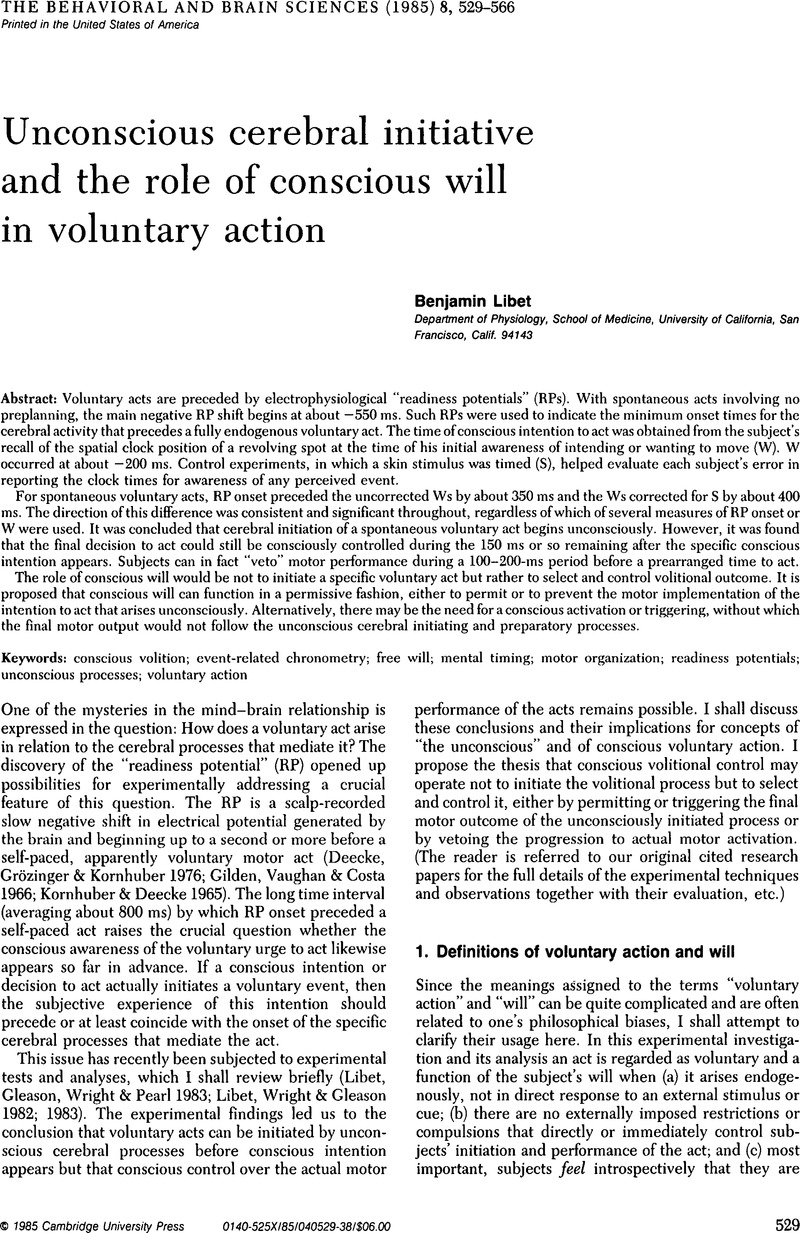Crossref Citations
This article has been cited by the following publications. This list is generated based on data provided by Crossref.
Lycan, William G.
1992.
UnCartesian materialism and Lockean introspection.
Behavioral and Brain Sciences,
Vol. 15,
Issue. 2,
p.
216.
Glymour, Bruce
Grush, Rick
Hardcastle, Valerie Gray
Keeley, Brian
Ramsey, Joe
Shagrir, Oron
and
Watson, Ellen
1992.
The Cartesian Theater stance.
Behavioral and Brain Sciences,
Vol. 15,
Issue. 2,
p.
209.
Roskies, Adina L.
and
Wood, C. C.
1992.
Cinema 1-2-Many of the Mind.
Behavioral and Brain Sciences,
Vol. 15,
Issue. 2,
p.
221.
Dennett, Daniel C.
and
Kinsbourne, Marcel
1992.
Escape from the Cartesian Theater.
Behavioral and Brain Sciences,
Vol. 15,
Issue. 2,
p.
234.
Lloyd, Dan
1992.
Toward an identity theory of consciousness.
Behavioral and Brain Sciences,
Vol. 15,
Issue. 2,
p.
215.
Libet, Benjamin
1992.
Models of conscious timing and the experimental evidence.
Behavioral and Brain Sciences,
Vol. 15,
Issue. 2,
p.
213.
Bridgeman, Bruce
1992.
What is consciousness for, anyway?.
Behavioral and Brain Sciences,
Vol. 15,
Issue. 2,
p.
206.
Antony, Michael V.
1992.
The where and when of what?.
Behavioral and Brain Sciences,
Vol. 15,
Issue. 2,
p.
201.
Velmans, Max
1992.
Is consciousness integrated?.
Behavioral and Brain Sciences,
Vol. 15,
Issue. 2,
p.
229.
Hurley, S. L.
1992.
Some mistakes about consciousness and their motivation.
Behavioral and Brain Sciences,
Vol. 15,
Issue. 2,
p.
211.
Wasserman, Gerald S.
1992.
The psychoanatomy of consciousness: Neural integration occurs in single cells.
Behavioral and Brain Sciences,
Vol. 15,
Issue. 2,
p.
232.
Treisman, Michel
1992.
Does the perception of temporal sequence throw light on consciousness?.
Behavioral and Brain Sciences,
Vol. 15,
Issue. 2,
p.
225.
Young, Andy
1992.
Closing the Cartesian Theatre.
Behavioral and Brain Sciences,
Vol. 15,
Issue. 2,
p.
233.
Dennett, Daniel C.
and
Kinsbourne, Marcel
1992.
Time and the observer: The where and when of consciousness in the brain.
Behavioral and Brain Sciences,
Vol. 15,
Issue. 2,
p.
183.
Rollins, Mark
1992.
Content and conformation: Isomorphism in the neural sway.
Behavioral and Brain Sciences,
Vol. 15,
Issue. 2,
p.
219.
Damasio, Antonio R.
1992.
The selfless consciousness.
Behavioral and Brain Sciences,
Vol. 15,
Issue. 2,
p.
208.
Teghtsoonian, Robert
1992.
In defense off the pineal gland.
Behavioral and Brain Sciences,
Vol. 15,
Issue. 2,
p.
224.
Van Gulick, Robert
1992.
Time for more alternatives.
Behavioral and Brain Sciences,
Vol. 15,
Issue. 2,
p.
228.
Warren, Richard M.
1992.
Global pattern perception and temporal order judgments.
Behavioral and Brain Sciences,
Vol. 15,
Issue. 2,
p.
230.
Clark, Andy
1992.
Experiential facts?.
Behavioral and Brain Sciences,
Vol. 15,
Issue. 2,
p.
207.


